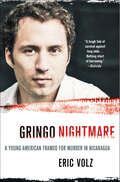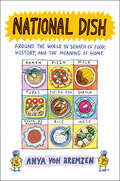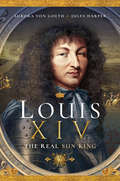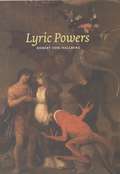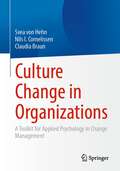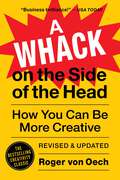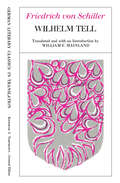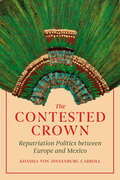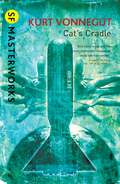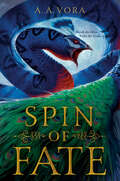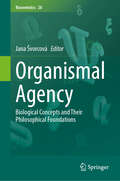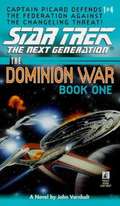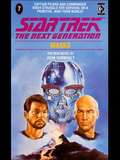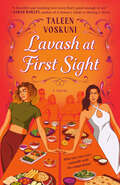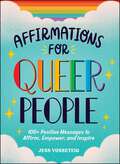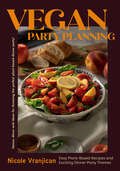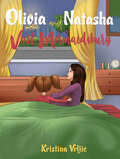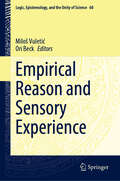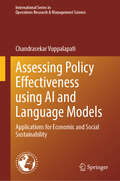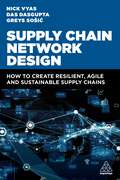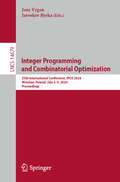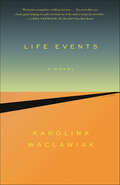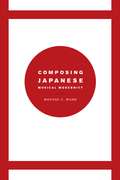- Table View
- List View
Gringo Nightmare: A Young American Framed for Murder in Nicaragua
by Eric VolzIn the spirit of Midnight Express and Not Without My Daughter comes the harrowing true story of an American held in a Nicaraguan prison for a murder he didn't commit.Eric Volz was in his late twenties in 2005 when he moved from California to Nicaragua. He and a friend cofounded a bilingual magazine, El Puente, and it proved more successful than they ever expected. Then Volz met Doris Jiménez, an incomparable beauty from a small Nicaraguan beach town, and they began a passionate and meaningful relationship. Though the relationship ended amicably less than a year later and Volz moved his business to the capital city of Managua, a close bond between the two endured.Nothing prepared him for the phone call he received on November 21, 2006, when he learned that Doris had been found dead---murdered---in her seaside clothing boutique. He rushed from Managua to be with her friends and family, and before he knew it, he found himself accused of her murder, arrested, and imprisoned. Decried in the press and vilified by his onetime friends, Volz suffered horrific conditions, illness, deadly inmates, an angry lynch mob, sadistic guards, and the merciless treatment of government officials. It was only through his dogged persistence, the tireless support of his friends and family, and the assistance of a former intelligence operative that Eric was released, in December 2007, after more than a year in prison.A story that made national and international headlines, this is the first and only book to tell Eric's absorbing, moving account in his own words.Visit the companion Exhibit Hall at the Gringo Nightmare website for additional photos, audio clips, video, case files, and more.
National Dish: Around the World in Search of Food, History, and the Meaning of Home
by Anya von BremzenNamed a Best Book of 2023 by Financial Times, The Guardian, and BBC's The Food Programme&“Anya von Bremzen, already a legend of food writing and a storytelling inspiration to me, has done her best work yet. National Dish is a must-read for all those who believe in building longer tables where food is what bring us all together.&” —José Andrés&“If you&’ve ever contemplated the origins and iconography of classic foods, then National Dish is the sensory-driven, historical deep dive for you . . . [an] evocative, gorgeously layered exercise in place-making and cultural exploration, nuanced and rich as any of the dishes captured within.&” —Boston GlobeIn this engrossing and timely journey to the crossroads of food and identity, award-winning writer Anya von Bremzen explores six of the world&’s most fascinating and iconic culinary cultures—France, Italy, Japan, Spain, Mexico, and Turkey—brilliantly weaving cuisine, history, and politics into a work of scintillating connoisseurship and charmWe all have an idea in our heads about what French food is—or Italian, or Japanese, or Mexican, or . . . But where did those ideas come from? Who decides what makes a national food canon? Anya von Bremzen has won three James Beard Awards and written several definitive cookbooks, as well as her internationally acclaimed memoir Mastering the Art of Soviet Cooking. In National Dish, she investigates the truth behind the eternal cliché—&“we are what we eat&”—traveling to six storied food capitals, going high and low, from world-famous chefs to culinary scholars to strangers in bars, in search of how cuisine became connected to place and identity.A unique and magical cook&’s tour of the world, National Dish brings us to a deep appreciation of how the country makes the food, and the food the country.
Louis XIV: The Real Sun King
by Aurora von Goeth Jules HarperA concise, straightforward biography of the seventeenth-century French monarch and his seventy-two-year reign. Innovator. Tyrant. Consummate showman. Passionate lover of women. After the death of King Louis XIII in 1643, the French crown went to his first-born son and heir, four-year old Louis XIV. In the extraordinary seventy-two years that followed, Louis le Grand—France&’s self-styled &“Sun King&”—ruled France and its people, leaving his unique and permanent mark on history and shaping fashion, art, culture and architecture like none other before. This frank and concise book gives the reader a personal glimpse into the Sun King&’s life and times as we follow his rise in power and influence: from a miraculous royal birth no one ever expected to the rise of king as absolute monarch, through the evolution of the glittering Château de Versailles, scandals and poison, four wars and many more mistresses . . . right up to his final days. Absolute monarch. Appointed by God. This is Louis XIV, the man. We will uncover his glorious and not-so-glorious obsessions. His debilitating health issues. His drive and passions. And we will dispel some myths, plus reveal the people in his intimate circle working behind the scenes on the Louis propaganda machine to ensure his legacy stayed in the history books forever. This easy-to-read narrative is accompanied by a plethora of little-known artworks, so if you&’re a Louis XIV fan or student, or just eager to know more about France&’s most famous king, we invite you to delve into court life of seventeenth-century French aristocracy, the period known as Le Grand Siècle—&“The Grand Century.&”
1924–1927: Der Frühling der Quantenmechanik
by Hans-Hennig von GrünbergSeines Heuschnupfens wegen verbrachte Werner Heisenberg im Juni 1925, vor nun bald hundert Jahren, zehn Tage auf der Insel Helgoland, wo er einen Artikel schrieb, der als der Beginn der Geschichte der modernen Quantentheorie angesehen werden kann. Im Oktober 1927 fand die fünfte Solvay-Konferenz in Brüssel statt, die wohl berühmteste Konferenz in der Geschichte der Physik, und brachte die spannende Entstehungsgeschichte der Quantenmechanik zu ihrem vorläufigen Ende. In diesen Jahren zwischen 1925 und 1927 entwickelten acht Physiker aus fünf Ländern eine Theorie, die das physikalische Verständnis unserer Welt radikal verändert sollte. Mit diesem Buch wandert man vom September 1924 bis zum Oktober 1927 durch die Zeit und erfährt dabei in Form von Monatsberichten, wie die Quantenmechanik entstanden ist, was die handelnden Personen erlebt und gedacht, in welcher Zeit sie gelebt haben und wie aus dem Zusammenspiel Einzelner langsam das gemeinsame Ganze entstanden ist. Das Buch wendet sich an Laien, die sich von der Quantenmechanik faszinieren lassen wollen und dabei verstehen werden, dass diese Theorie wie Anita Berber, der Jazz oder die Erfindung des Fernsehens ein typisches Kind der 1920er Jahre ist.
Lyric Powers
by Robert von HallbergThe authority of poetry varies from one period to another, from one culture to another. For Robert von Hallberg, the authority of lyric poetry has three sources: religious affirmation, the social institutions of those who speak the idioms from which particular poems are made, and the extraordinary cognition generated by the formal and musical resources of poems. Lyric Powers helps students, poets, and general readers to recognize the pleasures and understand the ambitions of lyric poetry. To explain why a reader might prefer one kind of poem to another, von Hallberg analyzes—beyond the political and intellectual significance of poems—the musicality of both lyric poetry and popular song, including that of Tin Pan Alley and doo-wop. He shows that poets have distinctive intellectual resources—not just rhetorical resources—for examining their subjects, and that the power of poetic language to generalize, not particularize, is what justly deserves a critic’s attention. The first book in more than a decade from this respected critic, Lyric Powers will be celebrated as a genuine event by readers of poetry and literary criticism.
Culture Change in Organizations: A Toolkit for Applied Psychology in Change Management
by Svea von Hehn Nils I. Cornelissen Claudia BraunCulture change in four steps!This extraordinary and well-illustrated book offers you valuable insights and tools for the four iterative phases of cultural change. It serves as a reference and shows you how large-scale change happens through viral change.It offers valuable insights and combines important findings from applied psychology, case studies and practical instructions for action with valuable insights from behavioral economics and neuroscience. ContentsConcrete tools for the four iterative phases of cultural changePractical case studies from the corporate world, including digital change and New WorkIn-depth background knowledge on behavioral and mindset changeTips for culture change agents on how to use emotional intelligence and mindfulness to build resilience and master change in the face of resistanceHelpful didactics through illustrations, summaries, checklists of success factors, background,reflection and exercise boxesTarget groupsExecutives, human resources professionals, people from organizational development, consultants in startups, mid-sized companies and global international corporations as well as public organizationsAuthorsDr. Svea von Hehn has been working internationally as a management consultant (including for McKinsey & Company) since 1999. She holds a PhD in Psychology, is a multi-certified systemic coach and is a partner at RETURN ON MEANING.Nils I. Cornelissen has been working internationally as a management consultant (including for McKinsey & Company) since 2003. He holds a degree in Communications and a master's degree in Psychology and Sociology. He is a certified coach as well as a facilitator and partner at RETURN ON MEANING.Claudia Braun has been working internationally as a management consultant (including for McKinsey & Company) since 2007. She holds a degree inInternational Business Administration, a Master of Public Administration, a Master of Public Policy as well as various certifications. She is a partner at RETURN ON MEANING.The translation was done with the help of artificial intelligence. A subsequent human revision was done primarily in terms of content.
Das Fahrzeug als Medienerlebnisraum: Mediatisiertes Fahrerleben – theoretische Modellbildung & empirische Exploration
by Sarah Viktoria von HörenMediatisiertes Fahrerleben, bei dem Autofahrende ihre Fahrt durch mediale Inhalte anreichern, veranschaulicht die Verschmelzung von kommunikativer und physischer Mobilität. Das Mediatized Drive Experiences (MDX)-Modell, ein Ergebnis der integrativen Verbindung von Kommunikationswissenschaft und Verkehrspsychologie, betrachtet die Medieninteraktion im Fahrzeug aus einer Erlebnisperspektive. Es berücksichtigt Faktoren wie Persönlichkeitseigenschaften, Fahrsituation, Medieninhalte und soziale Kontexte. Zentrale Dimensionen sind Enjoyment, Agency und Perceived Safety, beeinflusst durch Selbstregulierung sowie kognitive und emotionale Prozesse der Fahrenden. Eine Online-Studie untersucht die Mediennutzung in verschiedenen Fahrsituationen und deren Auswirkungen auf das Fahrerleben. Das Fahrzeug wird als neuer Raum für Medienerlebnisse betrachtet, was einen interdisziplinären Beitrag zur Erforschung der Mediennutzung im Automobilbereich leistet.
A Whack on the Side of the Head: How You Can Be More Creative
by Roger von OechThe hugely bestselling creativity classic with &“lasting appeal,&” A Whack on the Side of the Head is now available in an updated and revised edition, inspiring readers to unlock their creative thinking with thought-provoking examples, famous historical anecdotes, mind-bending puzzles, and so much more (New York Times)! For more than four decades, A Whack on the Side of the Head has been a consistent leader in stimulating creativity and innovation. Translated into over twenty languages, Roger von Oech&’s bestselling classic is back—and better than ever! Completely revised, enlarged, and supercharged with new ideas, this definitive edition offers more stories and exercises to bring its famous innovation boosters to a new generation. Learn how to overcome the ten biggest mental locks and unleash your full creative potential. Use the four roles of the creative process—Explorer, Artist, Judge, and Warrior—to generate and apply new ideas. Exploit the power of discontinuity, constraints, and &“playing the Wise Fool&” to find the &“second right answer&”!
Wilhelm Tell (German Literacy Classics in Translation)
by Friedrich von SchillerWhen Schiller completed Wilhelm Tell as a "New Year's Gift for 1805" he foretold that it would cause a stir. He was right. In the midst of Great Power politics a play which drew substance from one of the fourteenth-century liberation movements proved both attractive and inflammatory. Since then the work as become immensely popular. This new English translation by William F. Mainland brings out the essential tragi-comic nature of Wilhelm Tell but also emphasizes its impressive formal unity. Schiller based his play on chronicles of the Swiss liberation movement, in which Wilhelm Tell played a major role. Since Tell's existence has never been proven, Schiller, a historian by profession, felt he had to devise a figure who would bring the uncertainties and contradictions of the various Swiss chronicles into focus. Respected for his courage and skill with a bow, for his peaceable nature and his integrity, Schiller's archer—while always ready to aid his fellows—habitually seeks solitude. In the midst of political turmoil Wilhelm Tell is the nonpolitical man of action. Keenly interested in the problematic interplay of history and legend, Schiller turned it to be dramatic advantage. He constructed his play to illustrate the greatest possible development of the character traits suggested for Tell by the chronicles. The result of Schiller's supreme achievement in historical drama.
The Contested Crown: Repatriation Politics between Europe and Mexico
by Khadija von Zinnenburg CarrollFollowing conflicting desires for an Aztec crown, this book explores the possibilities of repatriation. In The Contested Crown, Khadija von Zinnenburg Carroll meditates on the case of a spectacular feather headdress believed to have belonged to Montezuma, emperor of the Aztecs. This crown has long been the center of political and cultural power struggles, and it is one of the most contested museum claims between Europe and the Americas. Taken to Europe during the conquest of Mexico, it was placed at Ambras Castle, the Habsburg residence of the author’s ancestors, and is now in Vienna’s Welt Museum. Mexico has long requested to have it back, but the Welt Museum uses science to insist it is too fragile to travel. Both the biography of a cultural object and a history of collecting and colonizing, this book offers an artist’s perspective on the creative potentials of repatriation. Carroll compares Holocaust and colonial ethical claims, and she considers relationships between indigenous people, international law and the museums that amass global treasures, the significance of copies, and how conservation science shapes collections. Illustrated with diagrams and rare archival material, this book brings together global history, European history, and material culture around this fascinating object and the debates about repatriation.
Cat's Cradle (S.F. MASTERWORKS #70)
by Kurt VonnegutOne of America's greatest writers gives us his unique perspective on our fears of nuclear annihilationExperiment.Told with deadpan humour and bitter irony, Kurt Vonnegut's cult tale of global destruction preys on our deepest fears of witnessing Armageddon and, worse still, surviving it.Solution.Dr Felix Hoenikker, one of the founding fathers of the atomic bomb, has left a deadly legacy to the world. For he is the inventor of ice-nine, a lethal chemical capable of freezing the entire planet. The search for its whereabouts leads to Hoenikker's three eccentric children, to a crazed dictator in the Caribbean, to madness. Felix Hoenikker's death-wish comes true when his last, fatal, gift to mankind brings about an end that, for all of us, is nigh.
Spin of Fate (The Fifth Realm #1)
by A. A. VoraIn a world inspired by karma, three teens encounter magnificent beasts, unforgiving magic, and epic battles in this propulsive and wholly original young adult fantasy.&“Evocative of Sanderson, Pullman, and Fullmetal Alchemist, yet at the same time shockingly original.&” —Rosaria Munda, author of FireborneAina&’s world is governed by Toranic Law, a force that segregates people into upper and lower realms. It&’s said that if the sinful lowers commit themselves to kindness and charity, their souls will lighten, allowing them into the peaceful upper realms.But Aina, one of the few lowers to ever ascend, just wants to go back home.Aina is desperate to reunite with her mother, hoping she&’s survived the beasts and wars of her homeland alone. After failing to weigh down her soul with petty crimes, Aina joins a rebel group defying the authorities and bringing aid to those condemned to a life of suffering in the lower realms. Alongside Aina are two new recruits: Meizan, a ruthless fighter trying to save his clan from extinction, and Aranel, a spoiled noble spying for the powers that be.Before long, the rebels find themselves in the middle of a brewing war. On one side, a violent king of a lower realm is bent on destroying Toranic Law; on the other, the authorities of the upper realms will do anything to stay on top. Now the young rebels must face both sides head-on if they want to stop a conflict that could break not only Toranic Law—but the universe itself.Fans of epic, propulsive fantasies like Six of Crows and innovative world-building like Avatar: The Last Airbender will delight in A. A. Vora's ambitious, unmissable debut.
Organismal Agency: Biological Concepts and Their Philosophical Foundations (Biosemiotics #28)
by Jana ŠvorcováThis book explores the notion of organismal agency from the perspective of both philosophy and biology. The two sections of the book delve into parallel themes, including distinctions between organic and inorganic nature, self-organization, autonomy, self-presentation, memory, umwelt, and environmental influence. The philosophical part focuses on the influential thinkers who shaped our perception of living entities beyond mere mechanisms. It scrutinizes the concepts of organism and nature in the works of Aristotle, Kant, Schelling, and various processualists. Each chapter explores facets of their ideas that directly or indirectly foreshadowed or contributed to the formulation of the concept of agency. The biological part of the book investigates various concepts associated with agency such as experience, meaning attribution, and phenotypic plasticity, as well as reproduction, organisational constraints, modularity, development of integrated phenotypes, organismal choices, or self-representation through animal organisation. In essence, this work offers a comprehensive examination of organismal agency and its philosophical and biological foundations. Collaboratively authored by individuals from several institutions, this publication caters primarily to researchers and students working at the intersection of philosophy and biology.
The Dominion War: Behind Enemy Lines (Star Trek: The Next Generation)
by John VornholtFrom the Gamma quadrant they came -- hordes of fierce Jem'Hadar warriors commanded by the mysterious Changelings, who will stop at nothing to achieve victory over both the United Federation of Planets and the Klingon Empire. Now that the Dominion has entered into an unholy alliance with the Cardassian military regime and seized control of Deep Space Nine , Starfleet finds itself fighting a losing war against unbeatable odds. As mighty fleets clash in the deadly battleground of space, the fate of the entire Alpha Quadrant hangs in the balance. The Enterprise-E is patrolling the Cardassian border, bracing for the joint Dominion-Cardassian offensive that Starfleet knows will come soon, when Captain Jean-Luc Picard and his crew are reunited with a former crewmate, friend, and enemy: Ro Laren. The onetime officer, who defected from Starfleet to join the rebel Maquis, brings disturbing news. Deep behind enemy lines, the Dominion is attempting to build an artificial wormhole that will allow them to bypass the mined Bajoran wormhole and bring fresh reinforcements into the Alpha Quadrant, altering the balance of power irrevocably. If Captain Picard cannot stop the project, the new wormhole will guarantee the ultimate victory of the Dominion!
Masks (Star Trek: The Next Generation #7)
by John VornholtThe Enterprise journeys to Lorca, a beautiful world where the inhabitants wear masks to show their rank and station. There, Captain Picard and an away team begin a quest for the planet's ruler and the great Wisdom Mask that the leader traditionally wears. Their mission: establish diplomatic relations. But Picard and his party lose contact with the ship, and Commander Riker leads a search party down to the planet to find them. Both men are unaware that their searchs are part of a madman's plan. A madman who is setting a trap that will ensnare both landing parties, and leave him poised to seize control of the awesome Wisdom Mask... And the planet Lorca itself.
Lavash at First Sight
by Taleen VoskuniSparks fly between two women pitted against each other in this delectable new romantic comedy by Taleen Voskuni, author of Sorry, Bro. Twenty-seven-year-old Nazeli &“Ellie&” Gregorian enjoys the prestige of her tech marketing job but is sick of the condescending Patagonia-clad tech bros, her micromanaging boss, and her ex-boyfriend, who she&’s forced to work with every day. When Ellie&’s lovingly overbearing parents ask her to attend PakCon—a food packaging conference in Chicago—to help promote their company and vie to win an ad slot in the Superbowl (no big deal), she&’s eager for a brief change and a delicious distraction. At the conference, she meets witty, devil-may-care Vanya Simonian. Ellie can&’t believe how easy it is to talk to Vanya and how much they have in common—both Armenian! From the Bay Area! Whose families are into food! Their meet-cute is cut short, however, when Ellie&’s parents recognize Vanya as the daughter of the owners of their greatest rival, whose mission (according to Ellie&’s mother) is to whitewash and package Armenian food for the American health-food crowd. Sworn as enemies, Ellie and Vanya must compete against each other under their suspicious parents' scrutiny, all while their feelings for each other heat to sizzling temps.
Affirmations for Queer People: 100+ Positive Messages to Affirm, Empower, and Inspire
by Jess VosseteigCelebrate your resilience and bravery in the face of discrimination and empower yourself and your community with these 100+ affirmations for queer people that celebrate being LGBTQIA+.Queer people are essential members of society—trailblazing for positive change and building up a stronger and more vibrant community every day. It&’s time to affirm these truths and so many more with Affirmations for Queer People. In this book, discover more than 100 affirmations to empower yourself, emphasize your self-worth, care for your mental health and emotional well-being, and so much more. You can use these affirmations and the accompanying texts to reflect on your own life and your future. You&’ll find amazing, inclusive artwork throughout that speaks to the beauty, bravery, and diversity of this incredible community. With Affirmations for Queer People, celebrate being a queer person, affirm your talent and worth, and bring your dreams to fruition.
Vegan Party Planning: Easy Plant-Based Recipes and Exciting Dinner Party Themes
by Nicole VranjicanEasy Plant-Based Foods and Vegan Recipes for Parties!#1 New Release in Vegan Diets, Gluten-Free Diets, and Vegetable CookingFrom unique vegan recipes to try at home, to party themes to entertain any guest, this cookbook is packed with tasty plant-based foods and delicious recipes set to delight even your hungriest guests!Entertaining your hungry friends just got easier! Nicole Vranjican of “Nikki Vegan” created this vegan entertaining cookbook with you in mind. Take an elaborately fun and inviting tour through plant-based food recipes of the world, from the shores of Italy to the French countryside and beyond. This cookbook is a delightful guide full of easy vegan recipes and party themes that your guests will love.These dinner party menu ideas bring fun to every day! Learn how to cook Greek Meatballs, Lentil au Poivre, decadent Mocha Almond Fudge Sundaes, and so much more. Enjoy vegan appetizers and meals that are super simple to make all while using affordable and accessible ingredients. These plant-based foods and vegan recipes will keep your friends and family coming back for more.Inside, you’ll find:Beautiful spreads of delicious recipes for vegan appetizers, meals, and dessertsEasy vegan recipes for parties at home and elsewhereGuides on how to entertain guests, create an effective shopping list, and make your home feel more invitingIf you're looking for a beautiful photography book of vegan recipes or vegan cookbooks, or if you liked PlantYou, Plant-Based on a Budget, or Making Vegan Meat, you’ll love Vegan Party Planning.
Olivia and Natasha Visit Mermaidsburg
by Kristina VrljicOlivia and Natasha are two sisters who happen to be the youngest explorers in the world. One night when both the girls are having trouble falling asleep, a fairy comes to visit and takes them to the ocean where they meet all the wonderful sea creatures and mermaids who live in Mermaidsberg. There, they help the mermaids solve a problem and save all the creature of the sea.
Empirical Reason and Sensory Experience (Logic, Epistemology, and the Unity of Science #60)
by Miloš Vuletić Ori BeckThe volume offers a lively and wide-ranging debate on the major questions of perceptual epistemology, including how perceptual experiences can bestow positive epistemic standing to empirical judgments and beliefs; the relative epistemic import of veridical and non-veridical perceptual experiences; the relation between experience and knowledge; and the nature of experience in view of its epistemic linkages to discursive contents. The volume is centered around five cutting-edge essays by leading authors in these areas—Anil Gupta, Andrea Kern, Christopher Peacocke, Susanna Schellenberg and Crispin Wright—along with no less than thirty contributions scrutinizing and critically discussing the essays, prompting detailed rejoinders from the lead authors. The volume closes with an extensive debate between Annalisa Coliva, Gupta and Wright. Taken as a whole, the volume covers much ground in epistemology of perception and displays a variety of approaches and perspectives through fruitful and accessible exchanges. It will be of interest not only to researchers working in perceptual epistemology but also to students new to the subject.
Assessing Policy Effectiveness using AI and Language Models: Applications for Economic and Social Sustainability (International Series in Operations Research & Management Science #354)
by Chandrasekar VuppalapatiThis volume uses advanced machine learning techniques to analyze government communication to evaluate policy effectiveness. The book develops policy effectiveness foundation models by cohorting historical budget policies with statistical models which are built on well reputed data sources including economic events, macroeconomic trends, and ratings and commerce terms from international institutions. By signal mining policies to the economic outcome patterns, the book aims to create a rich source of successful policy insights in terms of their effectiveness in bringing development to the poor and underserved communities to ensure the spread of wealth, social wellbeing, and standard of living to the common denomination of society rather than a selected quotient. Enabling academics and practitioners across disciplines to develop applications for effective policy interventions, this volume will be of interest to a wide audience including software engineers, data scientists, social scientists, economists, and agriculture practitioners.
Supply Chain Network Design: How to Create Resilient, Agile and Sustainable Supply Chains
by Nick Vyas Dr Das Dasgupta Professor Greys SošicThe traditional linear supply chain is no longer fit for purpose, and organizations must redesign their supply chains to become more customer-driven, agile, resilient and sustainable.Supply Chain Network Design shows how to design intelligent, agile supply chain networks in the age of geopolitical disruptions, fast-paced technological innovation and drive for more sustainable business. It outlines how to incorporate international relations and a global perspective into supply chain planning and actions and how to embed ESG and circular economy goals. It surveys the rapidly evolving technology landscape and how it impacts some companies and provides a competitive advantage to others. It also explores how to harness technologies such as robotic process automation, AI and machine-driven intelligence and the evolution of forecasting to demand sensing to enhance network design.Taking a global perspective, Supply Chain Network Design is supported by practical cases and examples and provides a consumer-driven lens that will help organizations evolve their networks from a traditional B2B to a B2B2C workflow. Covering both lessons learned and how to move forward, this will be an must-read for supply chain, logistics and distribution leaders, managers and analysts.
Integer Programming and Combinatorial Optimization: 25th International Conference, IPCO 2024, Wroclaw, Poland, July 3–5, 2024, Proceedings (Lecture Notes in Computer Science #14679)
by Jens Vygen Jarosław ByrkaThis book constitutes the refereed proceedings of the 25th International Conference on Integer Programming and Combinatorial Optimization, IPCO 2024, held in Wrocław, Poland, during July 3–5, 2024. The 33 full papers presented were carefully reviewed and selected from 101 submissions. IPCO is under the auspices of the Mathematical Optimization Society, and it is an important forum for presenting present recent developments in theory, computation, and applications. The scope of IPCO is viewed in a broad sense, to include algorithmic and structural results in integer programming and combinatorial optimization as well as revealing computational studies and novel applications of discrete optimization to practical problems.
Life Events: A Novel
by Karolina WaclawiakOne of Buzzfeed's 29 Books We Couldn't Put Down This Year“Every page of this novel is a point of no return; once you’ve read Karolina Waclawiak's Life Events, you will never see life, death, grief, and healing the same way.”—Saeed Jones, author of How We Fight for Our LivesA woman at a crossroads learns the only way to reclaim her life is to help others dieKarolina Waclawiak’s breakout novel, Life Events, follows Evelyn, who, at thirty-seven, is on the verge of divorce and anxiously dreading the death of everyone she loves. She combats her existential crisis by avoiding her husband and aimlessly driving along the freeways of California looking for an escape—one that eventually comes when she discovers a collective of “exit guides.” Evelyn enrolls in their training course, where she learns to provide companionship and a final exit for terminally ill patients seeking a conscious departure.She meets Daphne, a dying woman still full of life; Lawrence, an aging porn king; and Daniel, who seems too young to die and whom Evelyn falls for, despite knowing better, not to mention the exit guide code. Each client opens something new in Evelyn, allowing her a chance to access her own grief and confront the self-destructive ways she suppresses her pain. When Evelyn travels through the Southwest to an afterlife convention to further her death education, she must finally face her complicated relationship with her alcoholic father and reconcile her life choices.Sensitively observed and darkly funny, Life Events is a moving, enlivening story of the human condition: the doldrums of loneliness, the consuming regret of past mistakes, and the thrill, finally, of finding meaning—and love—where you least expect it.
Composing Japanese Musical Modernity (Chicago Studies In Ethnomusicology Ser.)
by Bonnie C. WadeWhen we think of composers, we usually envision an isolated artist separate from the orchestra—someone alone in a study, surround by staff paper—and in Europe and America this image generally has been accurate. For most of Japan’s musical history, however, no such role existed—composition and performance were deeply intertwined. Only when Japan began to embrace Western culture in the late nineteenth century did the role of the composer emerge. In Composing Japanese Musical Modernity, Bonnie Wade uses an investigation of this new musical role to offer new insights not just into Japanese music but Japanese modernity at large and global cosmopolitan culture. Wade examines the short history of the composer in Japanese society, looking at the creative and economic opportunities that have sprung up around them—or that they forged—during Japan’s astonishingly fast modernization. She shows that modernist Japanese composers have not bought into the high modernist concept of the autonomous artist, instead remaining connected to the people. Articulating Japanese modernism in this way, Wade tells a larger story of international musical life, of the spaces in which tradition and modernity are able to meet and, ultimately, where modernity itself has been made.
